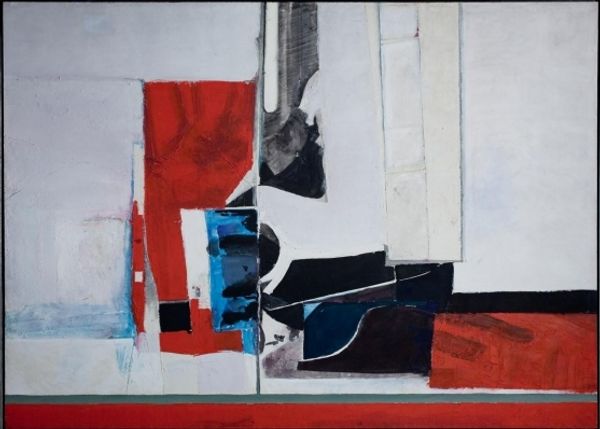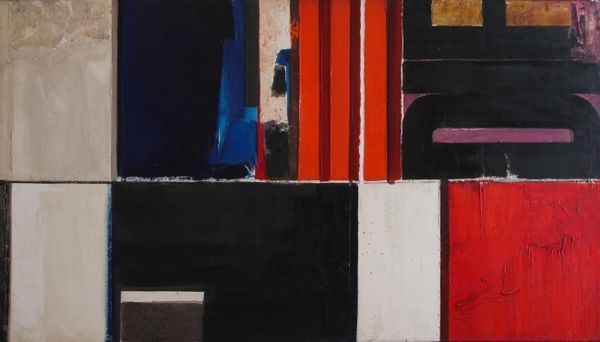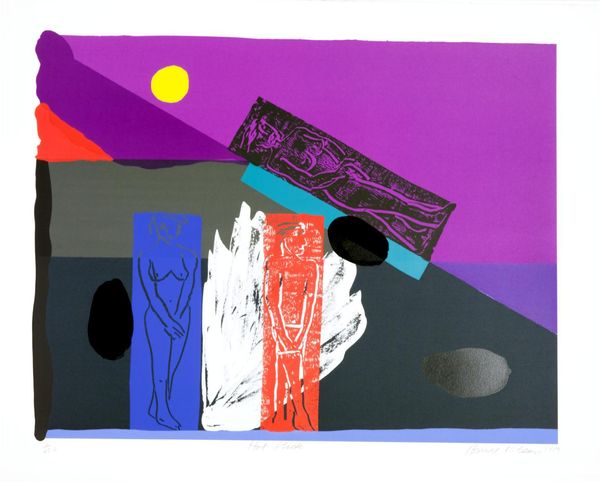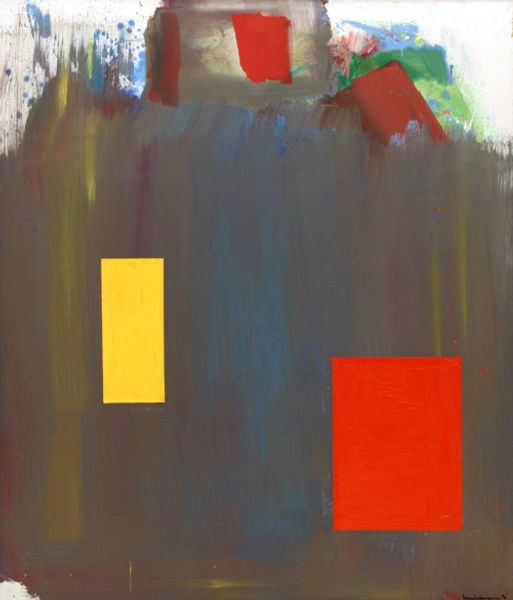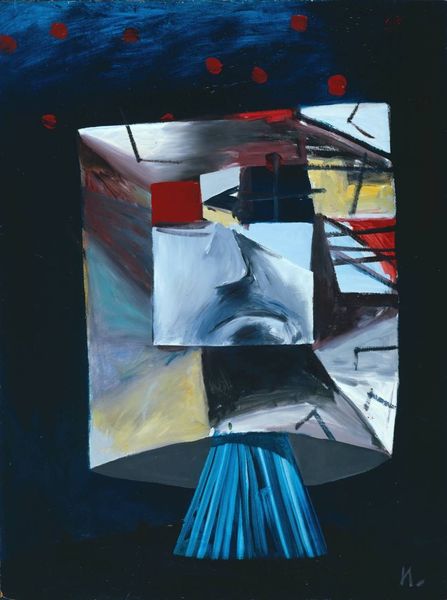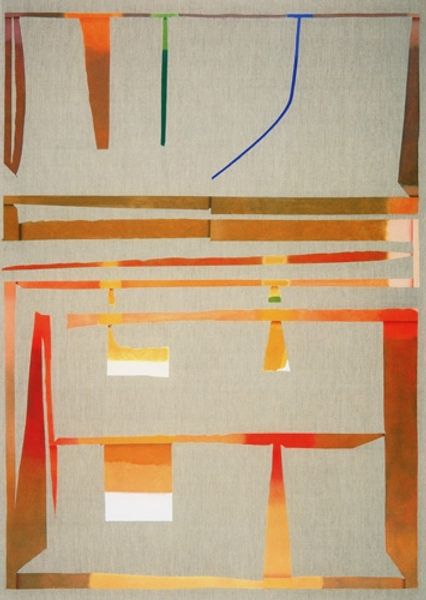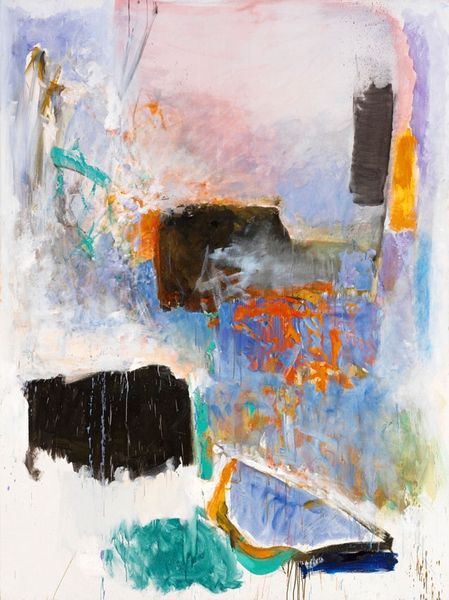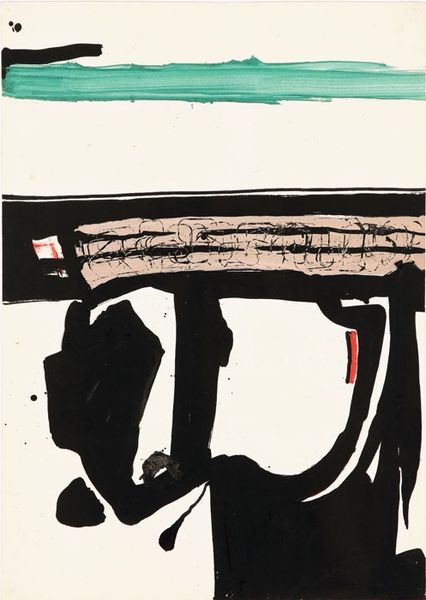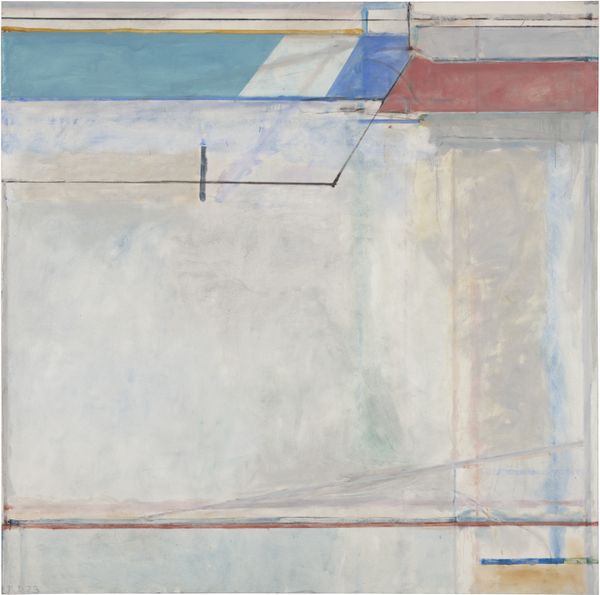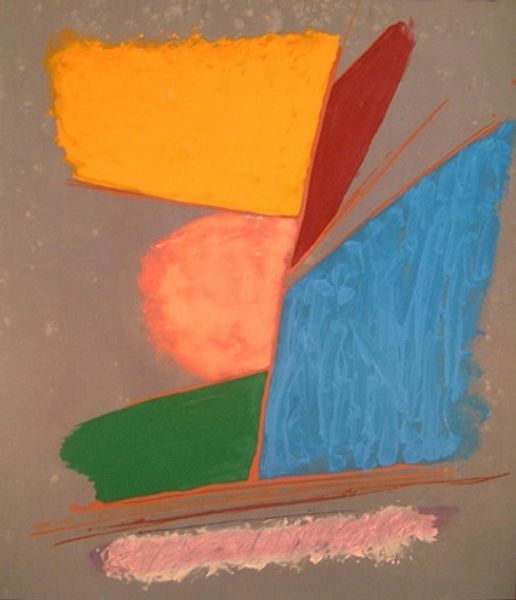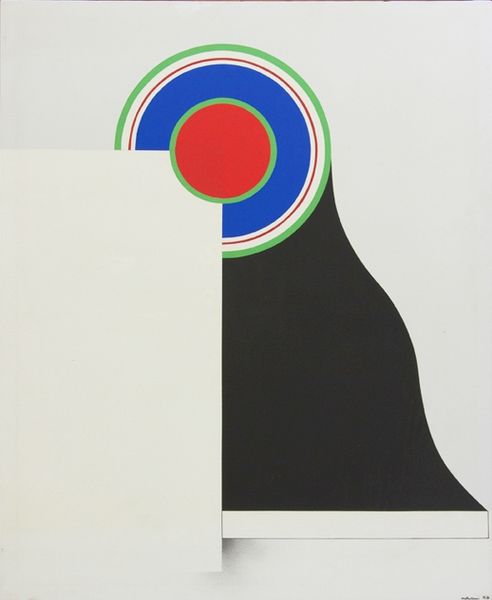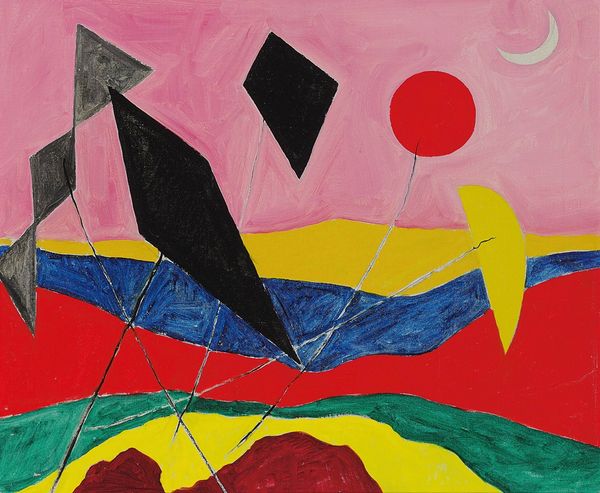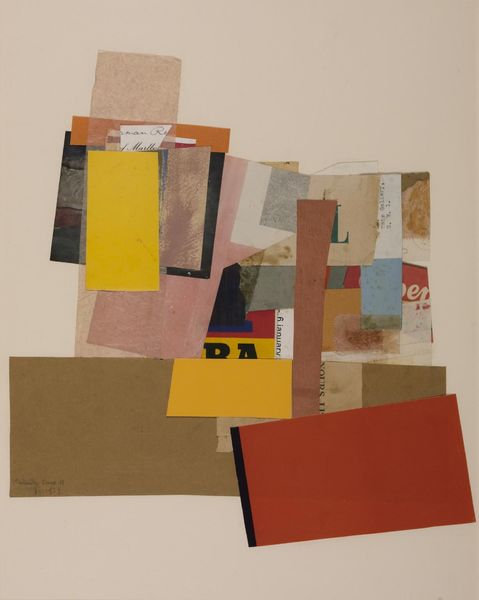
Dimensions: 160 x 110 cm
Copyright: Sofia Areal,Fair Use
Curator: Up next, we have an untitled work by Sofia Areal, created in 1994 using acrylic paint. Editor: My immediate reaction is… fractured. It's almost as if the canvas is trying to contain different realities that are constantly fighting for space, creating this sense of unresolved tension, maybe even of the angst within a postmodern perspective. Curator: Absolutely. Considering Areal's involvement with postmodernism, we can see how she grapples with deconstruction and challenges conventional artistic notions, which also involves pushing against the prevailing authoritarian regime in Portugal through her works. The socio-political landscape was intensely restrictive, deeply influencing Areal's exploration of themes like identity and societal structures within a very masculine framework. Editor: And those sharp contrasts - that harsh black against softer, more delicate washes of color, and even the geometry -- aren’t they a form of social commentary? How do these shapes play within the wider sphere of artistic production at the time? There’s certainly more than one point of conversation happening in this visual language. Curator: Exactly! While geometric abstraction and neo-expressionist tendencies are discernible, situating this piece historically means acknowledging how museums and institutions may have played a role in shaping the production and reception of such experimental artwork. In Portugal at that time, breaking free of prescribed notions was an intrinsically charged declaration. Editor: Looking closer, that fragmentation, especially within the social structures you pointed out, almost feels intentional, like each carefully constructed layer questions established forms. It is hard not to draw correlations between feminist theory and art from this particular period and place in time. Curator: In many ways, that’s Areal's triumph, isn't it? Provoking discourse by forcing dialogue between form and broader theoretical viewpoints that touch upon identity, gender and other social politics. Editor: It indeed pushes viewers to engage more critically, to peel back the layers of abstraction, hopefully fostering productive social criticism. Curator: Yes. Artistically examining such pieces becomes not only an evaluation but also a lens through which we can investigate societal constructs and hopefully engage and promote awareness. Editor: A worthwhile exploration then, wouldn't you say? One that asks viewers not only what the see, but why, given everything happening in the background.
Comments
No comments
Be the first to comment and join the conversation on the ultimate creative platform.

